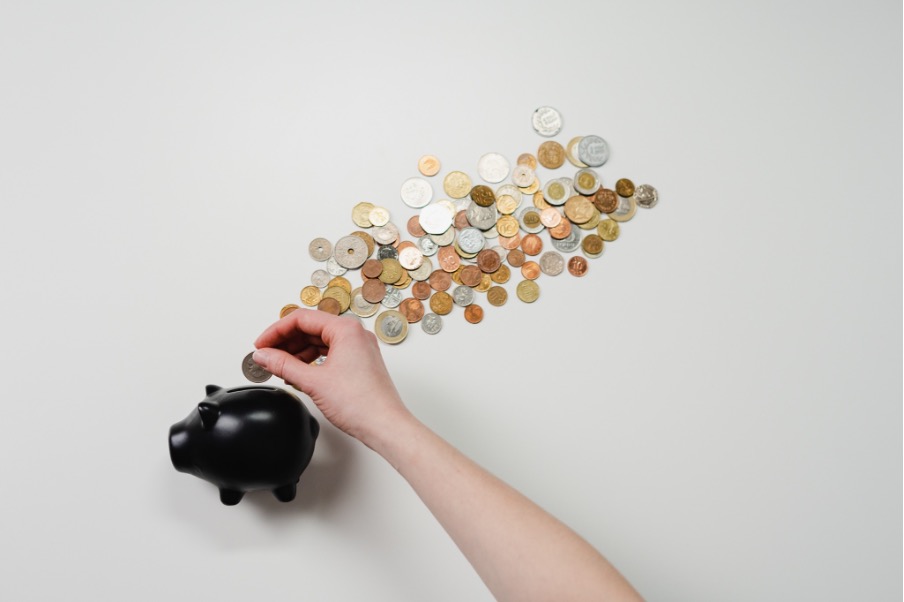A Quick Guide to Business Cash Reserves
By Matthew Gillman

For landscape business owners, it can be challenging to run a business when money is tight. There’s not enough cash to fix broken equipment, it’s difficult to keep up with fluctuating market prices, and so on. To keep this from happening, entrepreneurs must have sufficient cash reserves to supplement the need for growth and have a financial cushion for emergencies.
What are cash reserves?
Cash reserves are your business’s purchasing power when it comes to procuring supplies, upkeeping employees, and maintaining your tools and equipment when times go rough. This serves as your emergency fund in the event of a crisis, such as disasters, economic recessions, or a global pandemic. It is also what you use to make short-term investments or immediate purchases.
Cash reserves may not be limited to cash that you physically have on-hand. They may take the form of bank account balances, cryptocurrencies, and other assets that can be liquidated to cash within 90 days.
How cash reserves work
Cash reserves work differently to the entities that own them: businesses, banks, and individuals.
- Cash reserves for small and large businesses: Companies need sufficient cash reserves to cover any unprecedented short-term needs to ensure liquidity. For landscape business owners, this means having enough funds to cover purchase orders or increase marketing spend.
- Cash reserves for banking institutions: The U.S. Federal Reserve sets an ideal cash reserve for banks because they need to repay the money that people deposited. This amount is determined as a percentage of deposit liabilities (a.k.a. net transaction accounts) or the money that people and organizations deposit into banks that needs to be paid back in the future.
- Cash reserves for private individuals: People keep and maintain their cash reserves in various ways, like depositing them in bank accounts or making short-term investments with minimum risk of devaluation, like treasury bills or certificates of deposit.
Why are cash reserves important for landscaping businesses?
Generally, it would be important for any business to have a reserved stream of cash for unforeseen circumstances. However, landscaping businesses would have much more reason to reserve cash for emergency purposes because of expensive maintenance costs, bills, and other operating expenses.
Here’s a scenario: landscaping tools and equipment need extra care and maintenance if you want them to last. Heavy-duty equipment can be expensive to fix, and replacing them wouldn’t be the wisest idea if you’re stripped with cash. If you don’t have the funds to cover the repair or replacement of the equipment, then you won’t be able to attend to your customers.
In addition, your cash reserves can be a lifesaver if there are changes in minimum wage laws, increase in utility costs, or simply when you need to increase your manpower for temporary projects. Not to mention the costs involved with on-the-job accidents too.
Having spare money for emergencies, equipment repair, payroll and other needs will go a long way in protecting your business. When the time is right, you could also use your cash reserves for expansion, such as offering new products and services or branching out to a different city.
How to determine your landscaping business’s cash reserves
Below are the things you need to know when determining your cash reserves.
1. Know if you’re earning enough to save enough
As a standard rule of thumb, your business cash reserves should be at least three to six months’ worth of income. This means that even when you don’t have clients booking your services for three months, you’ll still be able to pay your suppliers or keep up with bills.
2. Don’t set the amount too high or too low
You might think that a larger cash reserve means a more profitable business, but this is not the case. Having high cash reserves is usually an indication that you are not tapping growth opportunities as they knock on your door. It means that you are investing little on growth, meaning you’re not using the funds to reinvest back into the business.
On the other hand, having low cash reserves would be a big threat to your business’ long-term survival. The business may stand a chance facing one crisis at a time, but if problems pile up, the insufficient emergency budget would not last long.
3. Make an educated guess based on your cash flow projection
Your cash flow serves as your monthly and annual report of how money is flowing into your business and it tells you exactly what your business’ financial health is. It gives you an estimate of how much you’re paying to suppliers, billers, and lenders, and how much money is left after taxes.
Revisit your cash flow statement and see if there are any necessary adjustments you need to make to have enough cash reserves.
How to compute your cash reserves
Most experts say that the ideal cash reserves for new small businesses should be five to 10 percent of their revenues, until the company has a consistent revenue stream. If you’ve assessed your business and figured that you’re earning a sustainable amount of cash, here’s how to compute your cash reserves.
Step 1: Determine your working capital by subtracting your current liabilities from your assets. This will determine your business’ short-term liquidity.
Step 2: Revisit your cash flow statement and look at your total operating expenses for the past 12 months. Divide that amount by 365 to know your daily operating expenses.
Step 3: Divide your working capital (amount from Step 1) by your daily operating expenses (amount from Step 2). This will tell you how many days of funds you have on hand to sustain your operations.
Another simpler way to determine your cash reserves is by getting the number of months you want to buffer up your reserve and take the average monthly spending of your business for the past year. Multiply your average monthly spending by the number of months you want to buffer. You may either increase or decrease this amount based on the changes in your expenditure or growth plans.
Here’s an example: If you have a monthly spending of $12,000 and you want to have five months’ worth of cash reserves, you basically need to have $60,000 in your reserve account. But if you think your expenses are going up and you think what you computed is still too low, you can take it up a notch to $75,000 just so you’re covered.
Building and reviewing your cash reserves
Cash reserves are important, not just for more established businesses but to new ones as well. Regularly check your cash flow and see if you can reduce any unnecessary expenses so you could save more reserves.
If you think that you’ve saved more than you expected, maybe it’s time to ramp up your operations and explore new avenues for growth. Consider hiring new people, getting software that automates your admin work, or replacing worn-out equipment. You could even use it to pay-off any outstanding debt and invest in worksite safety protocols.
To stay on track, review your cash reserves at least once a month. This allows you to see if you have enough funds to make risky decisions. If your business is stable, you can assess your cash reserves annually since your expenses today might be different next year. You should take time in re-assessing your cash reserves because an outdated contingency plan could do your business more harm than good.
Matthew Gillman is a business financing expert with more than a decade of experience in commercial lending. He is the founder and CEO of SMB Compass, a specialty finance company providing education and financing options for business owners.



